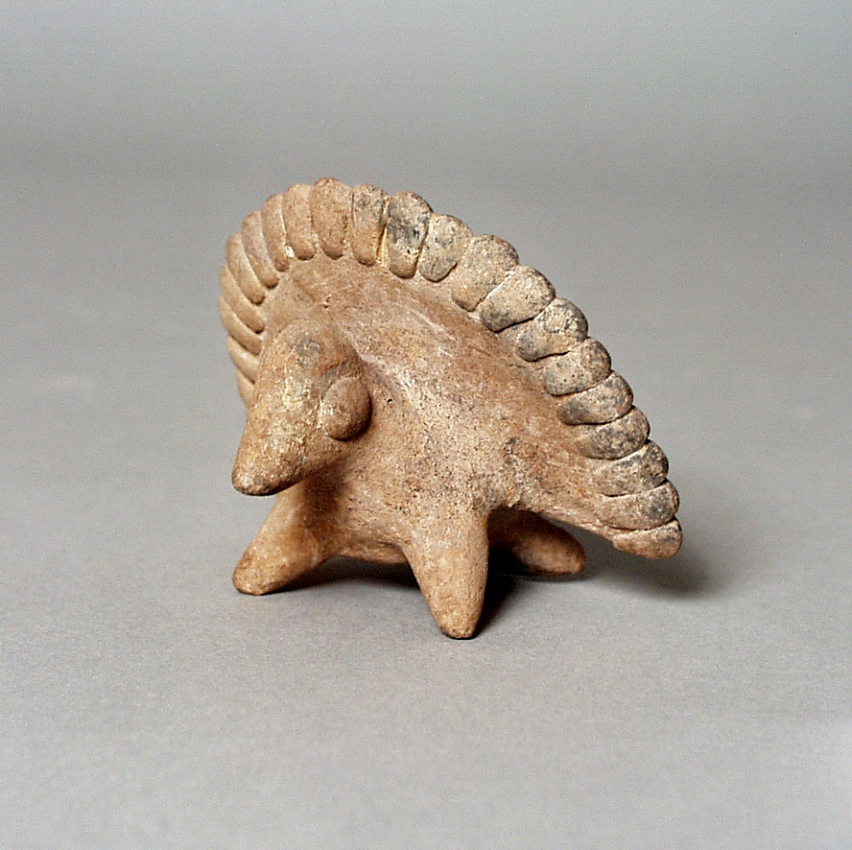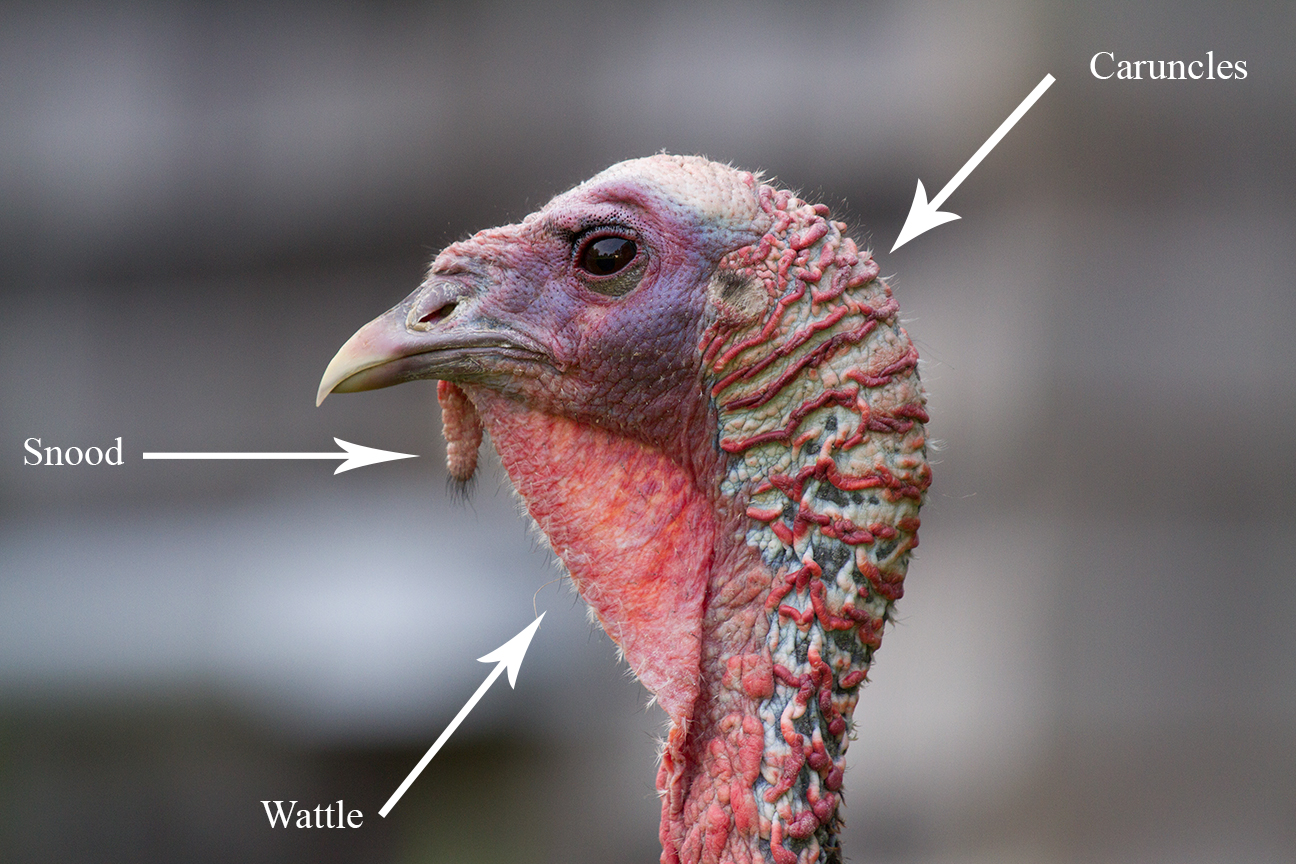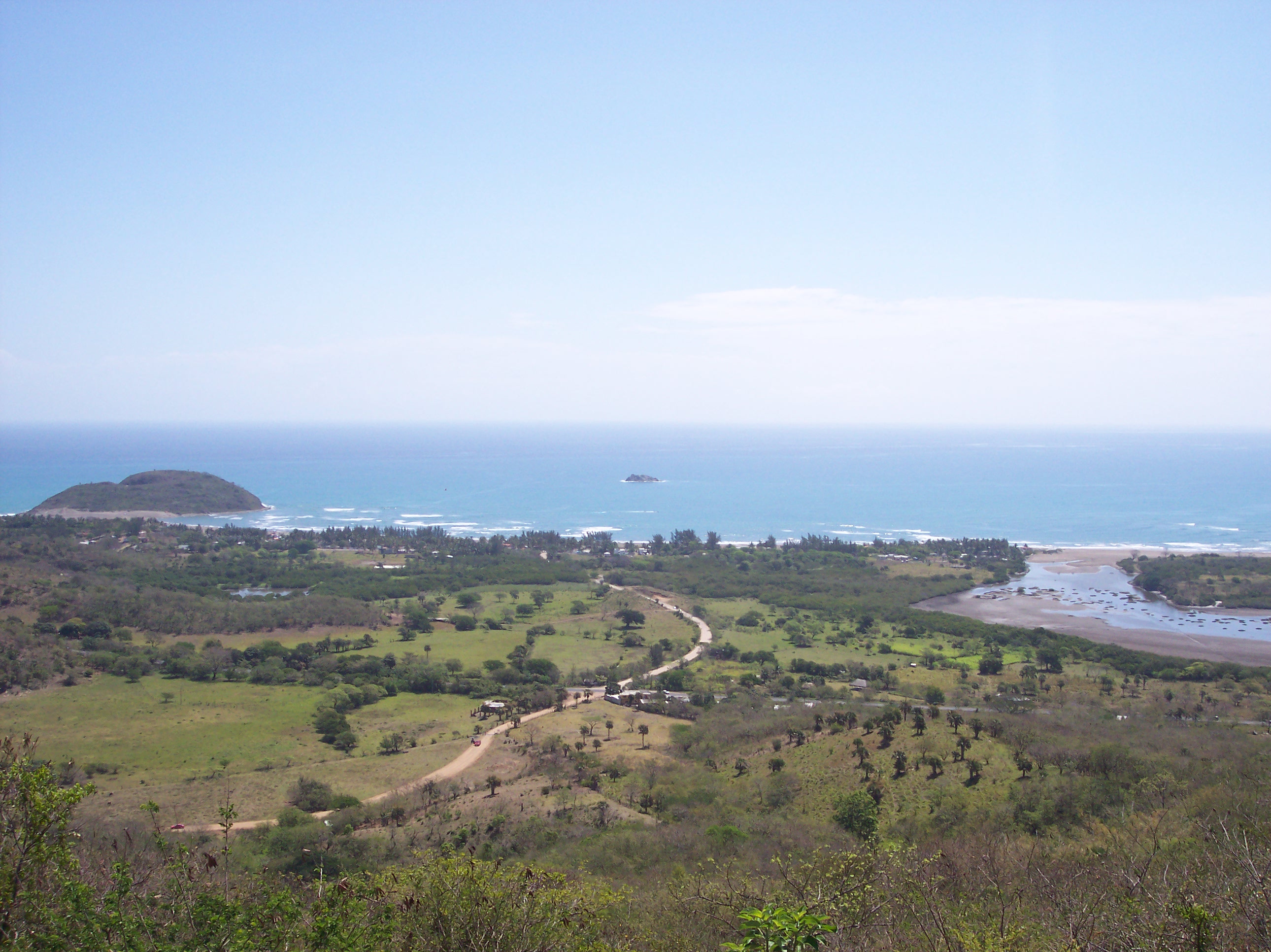|
Domesticated Turkey
The domestic turkey (''Meleagris gallopavo domesticus'') is a large fowl, one of the two species in the genus '' Meleagris'' and the same species as the wild turkey. Although turkey domestication was thought to have occurred in central Mesoamerica at least 2,000 years ago, recent research suggests a possible second domestication event in the area that is now the southwestern United States between 200 BC and 500 AD. However, all of the main domestic turkey varieties today descend from the turkey raised in central Mexico that was subsequently imported into Europe by the Spanish in the 16th century. The domestic turkey is a popular form of poultry. It is raised throughout temperate parts of the world, partially because industrialized farming has made it very cheap for the amount of meat it produces. Female domestic turkeys are called ''hens'', and the chicks are '' poults'' or '' turkeylings''. In Canada and the United States, male turkeys are called ''toms''. In the United Kingdom a ... [...More Info...] [...Related Items...] OR: [Wikipedia] [Google] [Baidu] |
Wild Turkey
The wild turkey (''Meleagris gallopavo'') is an upland game bird native to North America, one of two extant species of Turkey (bird), turkey and the heaviest member of the order Galliformes. It is the ancestor to the domestic turkey (''M. g. domesticus''), which was originally derived from a southern Mexican subspecies of wild turkey (not the related ocellated turkey). Taxonomy The wild turkey was Species description, formally described in 1758 by the Swedish naturalist Carl Linnaeus in the 10th edition of Systema Naturae, tenth edition of his ''Systema Naturae'' under its current binomial nomenclature, binomial name ''Meleagris gallopavo''. The type locality (biology), type locality is Mexico. The genus name ''Meleagris'' is from Ancient Greek μελεαγρις/''meleagris'' meaning "guineafowl". The specific epithet ''gallopavo'' is a late Medieval Latin word for a wild turkey: it combines Latin ''gallus'' meaning "fowl" and ''pavo'' meaning "peacock". The word was used in 155 ... [...More Info...] [...Related Items...] OR: [Wikipedia] [Google] [Baidu] |
Beltsville Small White
The Beltsville Small White is a modern American breed of domestic turkey. It was developed from 1934 at the Beltsville Agricultural Research Center of the United States Department of Agriculture in Beltsville, Maryland, and was named for that town and for its physical characteristics — small size and white plumage. It enjoyed a brief period of commercial success in the mid-twentieth century, but numbers then declined sharply; in the twenty-first century it is an endangered breed, and may be considered a heritage turkey breed. History Development for the Small White began in the 1930s in response to market research that said consumers wanted a turkey of small to medium size with no dark pinfeathers and more white meat. In 1934, the Beltsville Research Center started a seven-year breeding and research program; led by Stanley J. Marsden and lasting until 1941. Initially, the Small White was a cross of the Bronze, White Holland, White Austrian, Black, and wild turkeys. Two y ... [...More Info...] [...Related Items...] OR: [Wikipedia] [Google] [Baidu] |
Animal Husbandry
Animal husbandry is the branch of agriculture concerned with animals that are raised for meat, animal fiber, fibre, milk, or other products. It includes day-to-day care, management, production, nutrition, selective breeding, and the raising of livestock. Husbandry has a long history, starting with the Neolithic Revolution when animals were first Domestication, domesticated, from around 13,000 BC onwards, predating farming of the History of agriculture, first crops. During the period of ancient societies like ancient Egypt, cattle, sheep, goats, and pigs were being raised on farms. Major changes took place in the Columbian exchange, when Old World livestock were brought to the New World, and then in the British Agricultural Revolution of the 18th century, when livestock breeds like the English Longhorn, Dishley Longhorn cattle and Lincoln (sheep), Lincoln Longwool sheep were rapidly improved by agriculturalists, such as Robert Bakewell (agriculturalist), Robert Bakewell, to yi ... [...More Info...] [...Related Items...] OR: [Wikipedia] [Google] [Baidu] |
Royal Palm (turkey)
The Royal Palm is a breed of domestic turkey. It is not primarily selected for meat production, and is usually kept as an ornamental bird with a unique appearance, largely white with bands of metallic black. The Royal Palm first appeared in the 1920s on a farm in Lake Worth, Florida, apparently as a cross between Black, Bronze, Narragansett, and native turkeyYears of selective breeding followed to stabilize the coloring, and the Royal Palm was finally accepted by the American Poultry Association's Standard of Perfection in 1971. In Europe, a turkey with similar coloration is sometimes called the Cröllwitzer, Pied, or Black-laced Whit Most heritage turkey breeds declined after the adoption of the Broad Breasted White by the turkey industry; the Royal Palm is an endangered breed and is classified as "watch" by the American Livestock Breeds Conservancy. It is also included in Slow Food USA's Ark of Taste, a catalog of heritage foods in danger of extinction. The Australian and Un ... [...More Info...] [...Related Items...] OR: [Wikipedia] [Google] [Baidu] |
Black (turkey)
The Norfolk Black, also known as the Black Spanish or Black Turkey, is a British breed of domestic turkey. It is thought to derive from birds taken to Britain from Spain, where they had arrived with Spanish explorers returning from the New World. It is generally considered the oldest turkey breed in the UK. History Turkeys were brought to Europe by early conquistadors returning from the New World, and were introduced to Britain – probably from Spain – in the early sixteenth century. According to the ''Chronicle of the Kings of England'' of Richard Baker of 1643, this was in the fifteenth year of the reign of Henry VIII, or about 1524. William Strickland is often credited with bringing them. Blackbirds had occasionally been seen among New World flocks of wild birds; European breeders selectively bred for this colour. In England, turkey farming was carried out mainly in East Anglia, particularly in Norfolk. In the seventeenth or eighteenth century, early colonists t ... [...More Info...] [...Related Items...] OR: [Wikipedia] [Google] [Baidu] |
Tezcatlipoca
Tezcatlipoca ( ) or Tezcatl Ipoca was a central deity in Aztec religion. He is associated with a variety of concepts, including the night sky, hurricanes, obsidian, and conflict. He was considered one of the four sons of Ometecuhtli and Omecihuatl, the primordial dual deity. His main festival was Toxcatl, which, like most religious festivals of Aztec culture, involved human sacrifice. Tezcatlipoca's nagual, his animal counterpart, was the jaguar. In the form of a jaguar he became the deity Tepeyollotl ("Mountainheart"). In one of the two main Aztec calendars (the Tonalpohualli), Tezcatlipoca ruled the trecena ''1 Ocelotl'' ("1 Jaguar"); he was also patron of the days with the name ''Acatl'' ("reed"). A strong connection with the calendar as a whole is suggested by his depiction in texts such as the Codex Borgia and Codex Fejéváry-Mayer, where Tezcatlipoca is surrounded by day signs, implying a sort of mastery over them. A talisman related to Tezcatlipoca was a disc ... [...More Info...] [...Related Items...] OR: [Wikipedia] [Google] [Baidu] |
Trickster
In mythology and the study of folklore and religion, a trickster is a character in a story (god, goddess, spirit, human or anthropomorphisation) who exhibits a great degree of intellect or secret knowledge and uses it to play tricks or otherwise disobey normal rules and defy conventional behavior. Mythology Tricksters, as archetypal characters, appear in the myths of many different cultures. Lewis Hyde describes the trickster as a "boundary-crosser".Hyde, Lewis. ''Trickster Makes This World: Mischief, Myth, and Art''. New York: Farrar, Straus and Giroux, 1998. The trickster crosses and often breaks both physical and societal rules: Tricksters "violate principles of social and natural order, playfully disrupting normal life and then re-establishing it on a new basis." Often, this bending and breaking of rules takes the form of tricks and thievery. Tricksters can be cunning or foolish or both. The trickster openly questions, disrupts and mocks authority. Many cultures have ta ... [...More Info...] [...Related Items...] OR: [Wikipedia] [Google] [Baidu] |
Aztec
The Aztecs ( ) were a Mesoamerican civilization that flourished in central Mexico in the Post-Classic stage, post-classic period from 1300 to 1521. The Aztec people included different Indigenous peoples of Mexico, ethnic groups of central Mexico, particularly those groups who spoke the Nahuatl, Nahuatl language and who dominated large parts of Mesoamerica from the 14th to the 16th centuries. Aztec culture was organized into city-states (''altepetl''), some of which joined to form alliances, political confederations, or empires. The Aztec Empire was a confederation of three city-states established in 1427: Tenochtitlan, the capital city of the Mexica or Tenochca, Tetzcoco (altepetl), Tetzcoco, and Tlacopan, previously part of the Tepanec empire, whose dominant power was Azcapotzalco (altepetl), Azcapotzalco. Although the term Aztecs is often narrowly restricted to the Mexica of Tenochtitlan, it is also broadly used to refer to Nahuas, Nahua polities or peoples of central Pre ... [...More Info...] [...Related Items...] OR: [Wikipedia] [Google] [Baidu] |
Mesoamerica
Mesoamerica is a historical region and cultural area that begins in the southern part of North America and extends to the Pacific coast of Central America, thus comprising the lands of central and southern Mexico, all of Belize, Guatemala, El Salvador, and parts of Honduras, Nicaragua and northwestern part of Costa Rica. As a cultural area, Mesoamerica is defined by a mosaic of cultural traits developed and shared by its indigenous cultures. In the pre-Columbian era, many Indigenous peoples of the Americas, indigenous societies flourished in Mesoamerica for more than 3,000 years before the Spanish colonization of the Americas began on Hispaniola in 1493. In world history, Mesoamerica was the site of two historical transformations: (i) primary urban generation, and (ii) the formation of New World cultures from the mixtures of the indigenous Mesoamerican peoples with the European, African, and Asian peoples who were introduced by the Spanish colonization of the Americas. Mesoameri ... [...More Info...] [...Related Items...] OR: [Wikipedia] [Google] [Baidu] |
Veracruz
Veracruz, formally Veracruz de Ignacio de la Llave, officially the Free and Sovereign State of Veracruz de Ignacio de la Llave, is one of the 31 states which, along with Mexico City, comprise the 32 Political divisions of Mexico, Federal Entities of Mexico. Located in eastern Mexico, Veracruz is bordered by seven states, which are Tamaulipas, San Luis Potosí, Hidalgo (state), Hidalgo, Puebla, Oaxaca, Chiapas, and Tabasco. Veracruz is divided into Municipalities of Veracruz, 212 municipalities, and its capital city is Xalapa, Xalapa-Enríquez. Veracruz has a significant share of the coastline of the Gulf of Mexico on the east of the state. The state is noted for its mixed ethnic and indigenous populations. Cuisine of Veracruz, Its cuisine reflects the many cultural influences that have come through the state because of the importance of the port of Veracruz (city), Veracruz. In addition to the capital city, the state's largest cities include Veracruz, Coatzacoalcos, Córdoba, V ... [...More Info...] [...Related Items...] OR: [Wikipedia] [Google] [Baidu] |
Guerrero
Guerrero, officially the Free and Sovereign State of Guerrero, is one of the 32 states that compose the administrative divisions of Mexico, 32 Federal Entities of Mexico. It is divided into Municipalities of Guerrero, 85 municipalities. The state has a population of about 3.5 million people. It is located in southwest Mexico and is bordered by the states of Michoacán to the north and west, the State of Mexico and Morelos to the north, Puebla to the northeast and Oaxaca to the east. In addition to the capital city, Chilpancingo and the largest city Acapulco, other cities in Guerrero include Petatlán, Ciudad Altamirano, Guerrero, Ciudad Altamirano, Taxco, Iguala, Ixtapa, and Zihuatanejo. Today, it is home to a number of indigenous communities, including the Nahuas, Mixtecs, Tlapanec people, Tlapanecs, Amuzgos, and formerly Cuitlatec people, Cuitlatecs. It is also home to communities of Afro-Mexicans in the Costa Chica of Guerrero, Costa Chica region. The state was named after Vic ... [...More Info...] [...Related Items...] OR: [Wikipedia] [Google] [Baidu] |







